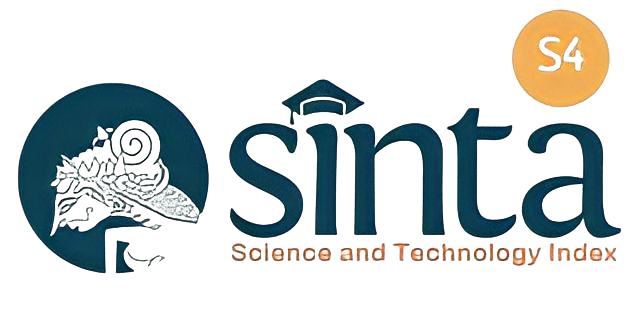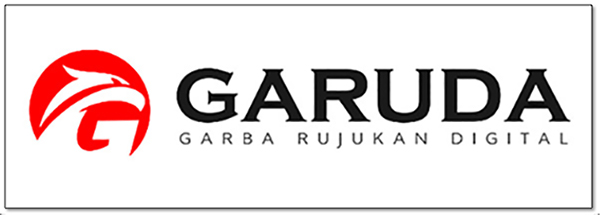Implementasi Cloning Data Menggunakan Aplikasi EaseUS Partition Master Dengan Menerapkan Metode Workflow
DOI:
https://doi.org/10.34012/jutikomp.v6i2.4028Keywords:
Implementasi, Kloning Data, Easeus Partition Master, Partisi, Hard DriveAbstract
Data cloning implementation is an essential process in information technology to duplicate content from one storage device to another. EaseUS Partition Master is a popular software used to implement this data cloning process. This abstract discusses the implementation of data cloning using EaseUS Partition Master. Data cloning is an efficient way to duplicate the entire contents of one hard drive or partition to another storage device. EaseUS Partition Master offers extensive capabilities in performing data cloning with various features that can facilitate users in carrying out the process. One of the most commonly used cloning features is "Disk Clone," which allows users to duplicate an entire hard drive to another hard drive. In this case, EaseUS Partition Master will automatically detect all existing partitions, and users can select the partitions they want to clone. In addition, EaseUS Partition Master also provides a "Partition Clone" feature, which allows users to clone a specific partition from one hard drive to another. This feature is helpful if users only want to duplicate data from a few selected partitions. Once the user has selected the desired type of cloning, EaseUS Partition Master will guide the user through the following steps. This includes selecting a target hard drive or partition to place the cloned data on and customizing the cloning settings according to the user's needs. During the cloning process, EaseUS Partition Master provides a clear and informative view of the cloning progress. Users can track and monitor the process to ensure everything is going well. Overall, implementing data cloning using EaseUS Partition Master provides a reliable and easy-to-use solution for users who need an efficient cloning process. With its comprehensive features and intuitive interface, the software allows users to clone their data without any significant difficulties.
References
F. R. Yani, G. L. P. Pratama, D. Parasuta, and T. A. Frandana, “Penerapan System Cloning Data Menggunakan AOMEI Partitions Assistant dan EaseUs ToDo Backup Terhadap Hardisk,” J-Intech, vol. 10, no. 2, pp. 56–62, 2022, doi: 10.32664/j-intech.v10i2.753.
P. Chaim and M. P. Laurini, “Data Cloning Estimation and Identification of a Medium-Scale DSGE Model,” Stats, vol. 6, no. 1, pp. 17–29, 2022, doi: 10.3390/stats6010002.
A. Putra, M. Donni, and L. Siahaan, “COMPARATIVE ANALYSIS OF DATA RECOVERY USING EASEUS DATA RECOVERY WIZARD AND RECUVA APPLICATIONS,” vol. 10, no. 3, pp. 161–165, 2022.
E. Haryadi, A. Abdussomad, and R. Robi, “Implementasi Sistem Backup Data Perusahaan Sebagai Bagian dari Disaster Recovery Plan,” Sainstech J. Penelit. dan Pengkaj. Sains dan Teknol., vol. 29, no. 2, pp. 6–11, 2019, doi: 10.37277/stch.v29i2.331.
J. Chen, Y. Yan, S. Guo, Y. Ren, and F. Qi, “A System for Trusted Recovery of Data Based on Blockchain and Coding Techniques,” Wirel. Commun. Mob. Comput., vol. 2022, no. 2, 2022, doi: 10.1155/2022/8390241.
M. S. Simanjuntak and J. Panjaitan, “Analisa Recovery Data Menggunakan Software,” J. Tek. Inform. Komput. Univers., vol. 1, no. 1, pp. 26–32, 2021.
K. S. Mahedy, “Implementasi Sistem Backup Data Pada Sistem Informasi Perpustakaan Universitas Pendidikan Ganesha,” J. Pendidik. Teknol. dan Kejuru., vol. 18, no. 2, pp. 216–225, 2021.
H. F. R. PUTRA, “OTOMATISASI PROSES ADMINISTRASI KERJA PRAKTIK DENGAN METODE WORKFLOW MANAGEMENT SYSTEM UNTUK PENINGKATAN EFEKTIFITAS WAKTU PELAYANAN,” vol. 4, no. 1, pp. 88–100, 2023.
B. Sistem, “Tugas proses bisnis informasi,” no. 1711050019, pp. 1–9, 2019.
A. A. N. Fajrillah and S. Annastasia, “Validitas Arsitektur Bisnis menggunakan Metode Formal PetriNets (Studi Kasus: Perusahaan Manufaktur di Indonesia),” is Best Account. Inf. Syst. Inf. Technol. Bus. Enterp. this is link OJS us, vol. 6, no. 1, pp. 61–75, 2021, doi: 10.34010/aisthebest.v6i1.4800.
K. Anam and A. T. Muharram, “ANALISA DAN PERANCANGAN SISTEM INFORMASI AKADEMIK BERBASIS WEB PADA MI AL-MURSYIDIYYAH AL- ‘ ASYIROTUSSYAFI ’ IYYAH,” vol. 11, no. 2, 2018.
P. Utomo and F. W. Prayitno, “Perancangan Dashboard Sistem Informasi Untuk Agile Manajemen Proyek dengan Menggunakan JIRA – Studi Kasus di PT . FLASHiZ Indonesia,” vol. 5, no. 2, 2015.
T. Pustaka, “Penggunaan Workflows Dalam Aplikasi Bioinformatika Geneious Untuk Menganalisis Data Genomik,” pp. 47–50, 2019.
Downloads
Published
How to Cite
Issue
Section
License
Copyright (c) 2023 Yennimar -, Julfan Farman Zebua, Wikesyah Putri Sitorus, Kristina Ginting, Yans Y.M.P. Situmorang

This work is licensed under a Creative Commons Attribution-ShareAlike 4.0 International License.
- Hak Cipta atas naskah-naskah karya ilmiah di dalam Jurnal ini dipegang oleh Penulis.
- Penulis menyerahkan hak saat pertama kali mempublikasi Naskah karya ilmiahnya dan secara bersamaan Penulis memberikan izin/lisensi dengan mengacu pada Creative Commons Attribution-ShareAlike 4.0 International License kepada pihak lain untuk menyebarkan karya ilmiahnya tersebut dengan tetap mencantumkan penghargaan bagi penulis dan Jurnal Teknologi dan Ilmu Komputer Prima sebagai media Publikasi pertama atas karya tersebut.
- Hal-hal yang berkaitan dengan non-eksklusivitas pendistribusian Jurnal yang menerbitkan karya ilmiah penulis dapat diperjanjikan secara terpisah (contoh: permintaan untuk menempatkan karya yang dimaksud pada perpustakaan suatu institusi atau menerbitkannya sebagai buku) dengan Penulis sebagai salah satu pihak perjanjian dan dengan penghargaan pada Jurnal Teknologi dan Ilmu Komputer Prima sebagai media publikasi pertama atas karya dimaksud.
- Penulis dapat dan diharapkan untuk mengumumkan karyanya secara online (misalnya pada Repositori atau pada laman Organisai/Institusinya) sejak sebelum dan selama proses pengumpulan naskah, sebab upaya tersebut dapat meningkatkan pertukaran citasi lebih awal dan dengan cakupan yang lebih luas.








